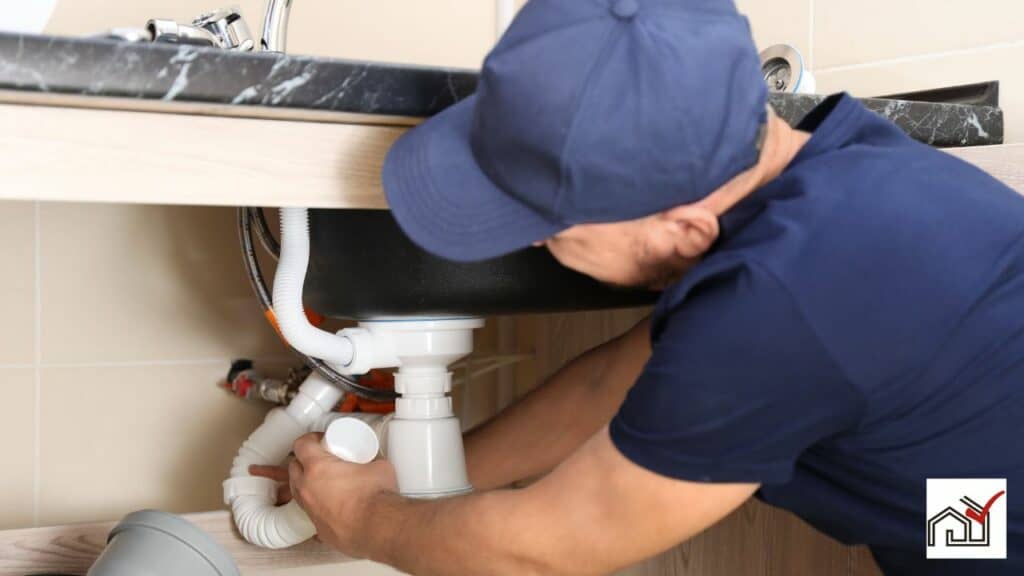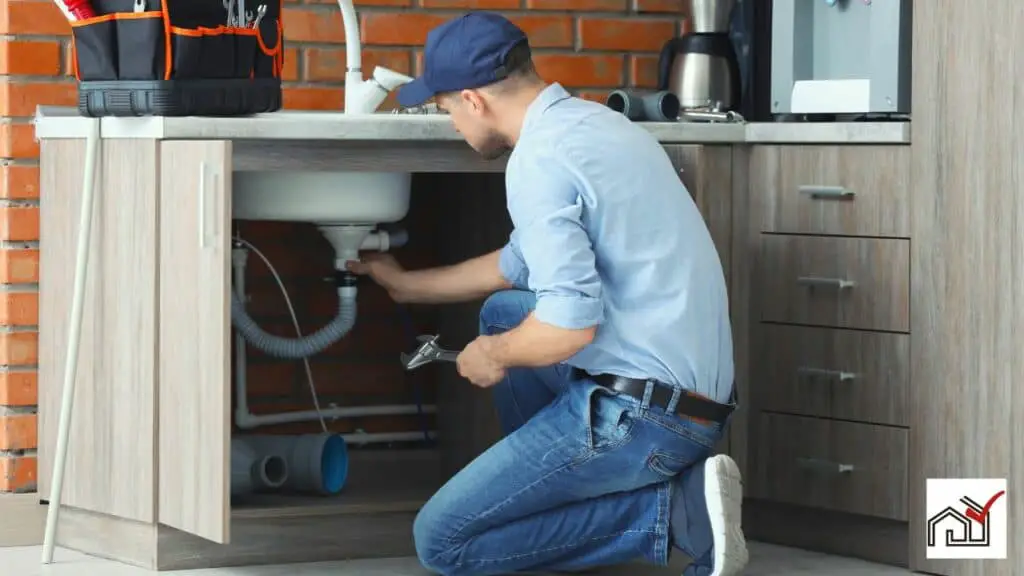The optimal height for a kitchen sink drain is typically 18 to 20 inches from the floor. This height ensures effective drainage, provides sufficient space for the P-trap, and allows for the installation of the hot and cold water supply lines.
The height of the drain impacts the flow of water. If the drain is too high or too low, it may interfere with the water flow, leading to potential blockages.
A height of 18 to 20 inches maintains an ideal slope for the drain pipe, resulting in unobstructed drainage.
The P-trap, a vital part of your sink plumbing, also requires adequate space to operate correctly. It’s the curved pipe that blocks sewer gases from entering your house. The ideal drain height ensures the P-trap has enough space.
An ideal drain height also makes it easier to install hot and cold water supply lines. If the drain is too low, it can create space issues, making installation challenging and possibly leading to future plumbing problems.
What Factors Affect the Ideal Height of Kitchen Sink Drain?
The ideal height of your kitchen sink drain can be affected by several factors. These include:
- The depth of the sink,
- The height of the counter,
- The size of the trap, and
- The type of sink you select.
Understanding these factors can help you make the best decisions for your sink installation.
1. Sink Depth
Sink depth typically ranges from 8 to 12 inches, which directly influences the kitchen sink drain’s height.
Deeper sinks offer more space for dishwashing but necessitate changes to the rough-in height.
While installing the sink, the following factors should be taken into account:
- Sink size,
- Sink installation type, and
- Desired drain height.
The drain height for an 8-inch deep sink will differ from a 12-inch deep sink.
Generally, the suitable rough-in height for sink drains ranges from 18 to 20 inches. However, this may vary depending on your specific sink depth.
You should make the necessary adjustments to ensure proper drainage and adherence to building regulations.
2. Counter Height
The height of your counter is important as it affects the placement of your water supply lines and P-trap.
A typical kitchen counter is 36 inches high, which determines your sink drain’s height. You need to factor in the counter height and sink depth when setting the drain height.
For example, if you have a standard counter and a sink that’s 7 inches deep, your drain should ideally be 29 inches from the floor.
The counter height also affects the space for the P-trap, which is essential for proper drainage.
If there isn’t enough space, the P-trap might attach to the counter’s bottom, making it difficult to replace or repair.
Therefore, the height of your counter is a significant factor in setting up your kitchen sink.
3. Trap Size

The size of your trap significantly affects the performance of your plumbing system.
The trap size determines the height of your kitchen sink drain and its efficiency.
Consider the following factors while installing the trap:
- Drainage quality: The right-sized trap ensures efficient drainage. A small trap may restrict water flow leading to slow draining or blockages.
- Space usage: The size of the trap determines the space it takes under the sink. A larger trap uses more space, which might reduce storage but enhance drainage.
- Maintenance: Bigger traps are generally simpler to clean and less likely to clog, hence easier to maintain.
So when setting up your kitchen sink, consider the trap size. It’s not solely about the counter height and sink depth.
4. Type of Sink
The type of sink can greatly determine the optimal height of your kitchen sink drain.
The depth of the sink is crucial. If you have a deep sink, you’ll need to adjust the drain height to ensure proper drainage and meet building regulations.
The number of sink bowls also plays a role. For instance, a double bowl sink may need different drain heights.
The drain’s position in the sink also matters. Sinks with centered drains generally drain quicker, while those with offset drains might need height adjustments for efficient drainage.
What Are the Advantages of Installing Kitchen Sink Drain at An Ideal Height?
When your sink drain is at the right height, it facilitates efficient drainage, reducing the likelihood of blockages. It also helps keep the kitchen clean and healthy.
The ideal drain height also simplifies sink installation. It makes connecting the sink to the existing plumbing system easier, minimizing errors.
When the drain height matches the counter height, sink depth, and trap size, compatibility issues are less likely.
Here are three key benefits of the correct kitchen sink drain height:
- Proper P-trap placement: Enough space for the P-trap stops sewer gases from entering your home. It’s also easier to maintain and repair.
- Optimal water supply lines: The correct drain height helps in the proper installation of the hot and cold water supply lines, ensuring your kitchen sink works well.
- Ergonomic design: A well-placed sink drain reduces body strain during everyday use, improving comfort.
What Are the Disadvantages of Installing Kitchen Sink Drain at An Ideal Height?
Installing a kitchen sink drain at the ideal height has its drawbacks.
Firstly, it can lead to slower drainage if the drain is not centered correctly, causing water to pool. Adjusting the rough-in height might solve this, but it could be time-consuming.
Secondly, achieving the perfect height can be challenging. If your sink or counter height doesn’t conform to standard measurements, you’ll need to adjust the rough-in height, resulting in extra installation work.
Finally, the ideal sink drain height might limit your flexibility. If you have a unique sink design or custom installation in mind, the standard height may not be suitable.
As a result, you may need to compromise on your sink setup, like the sink type or drain position.
How to Install Kitchen Sink Drain at Ideal Height?
Let’s now discuss how to correctly install a kitchen sink drain at the ideal height to avoid potential issues.
First, choose the height of your kitchen counter, typically 36 inches, but it can be adjusted as per your comfort and requirements.
Then, select the type of sink you wish to install – single or double bowl, and decide on its depth. Standard sinks are generally 8 inches deep, but you can opt for deeper ones if needed.
To calculate the rough-in height for the sink drain, subtract the sink’s depth from the counter’s height.
For example, if you have a 36-inch counter and a 7-inch sink, your drain would be 29 inches from the floor.
Here are the steps to follow:
- Mark the calculated rough-in height on the wall where the drain will be installed.
- Attach the drain pipe at the marked height, ensuring it’s level and secure.
- Connect the P-trap to the drain pipe, ensuring it’s above the base cabinet floor.
Finally, install the sink and connect it to the drain pipe and P-trap. Remember to install the water supply lines and check the drainage for any leaks or issues.
With proper planning and execution, you can have a kitchen sink drain installed at the ideal height.





